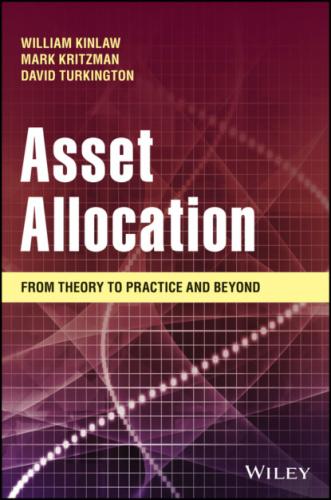Our objective is to minimize portfolio risk subject to two constraints. Our first constraint is that the weighted average of the stock and bond returns must equal the expected return for the portfolio. We are also faced with a second constraint: we must allocate our entire portfolio to some combination of stocks and bonds. Therefore, the fraction we allocate to stocks plus the fraction we allocate to bonds must equal 1.
We combine our objective and constraints to form the following objective function:
The first term of Equation 2.3 up to the third plus sign equals portfolio variance, the quantity to be minimized. The next two terms that are multiplied by
Our objective function has four unknown values: (i) the percentage of the portfolio to be allocated to stocks, (ii) the percentage to be allocated to bonds, (iii) the Lagrange multiplier for the first constraint, and (iv) the Lagrange multiplier for the second constraint. To minimize portfolio risk given our constraints, we must take the partial derivative of the objective function with respect to each asset weight and with respect to each Lagrange multiplier and set it equal to zero, as shown below:
Given assumptions for expected return, standard deviation, and correlation (which we specify later), we wish to find the values of
Next, we express Equations 2.4, 2.5, 2.6, and 2.7 in matrix notation, as follows:
We next substitute estimates of expected return, standard deviation, and correlation for domestic equities and Treasury bonds shown earlier in Tables 2.1 and 2.2.
With these assumptions, we rewrite the coefficient matrix as follows:
Its inverse equals:
Because
